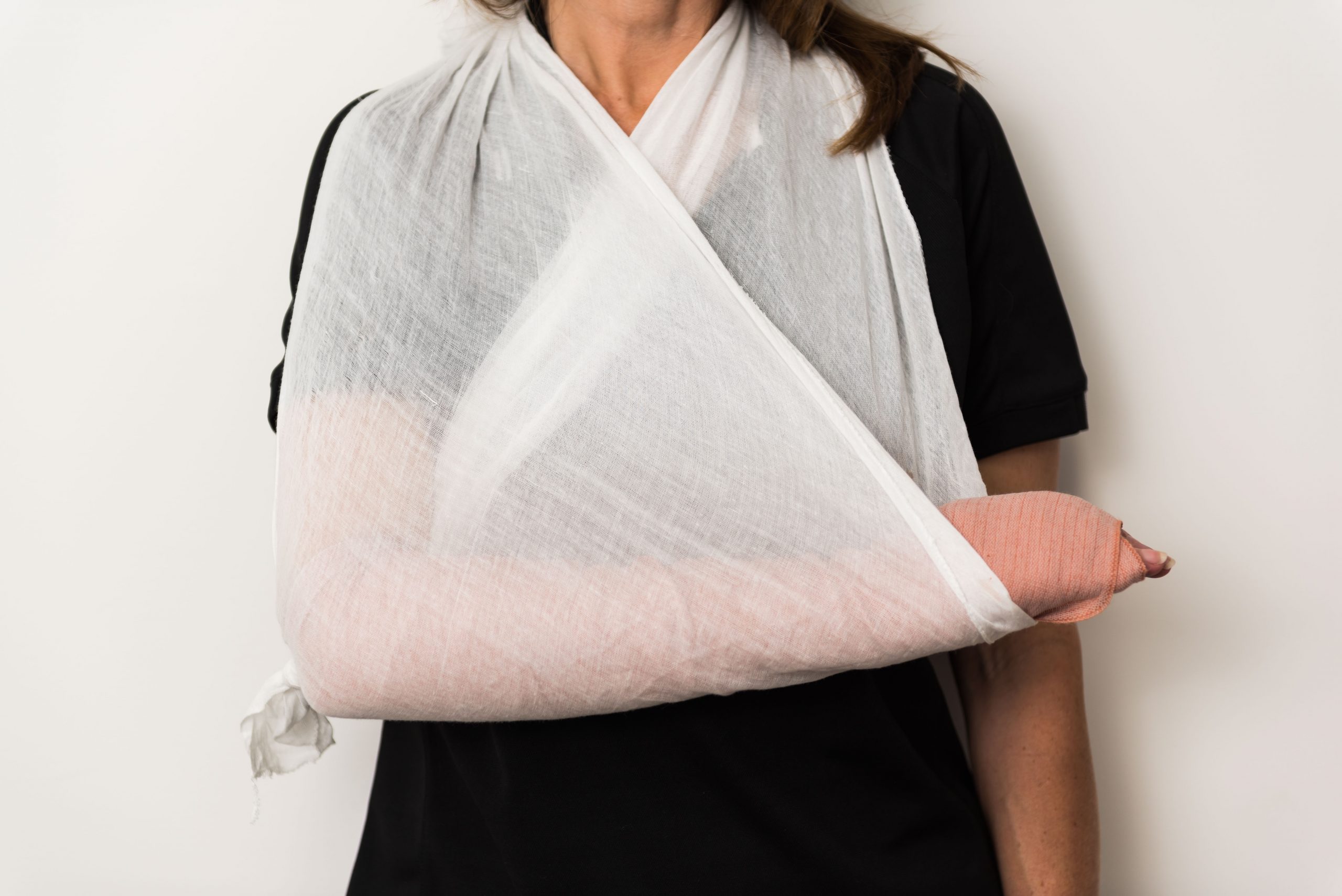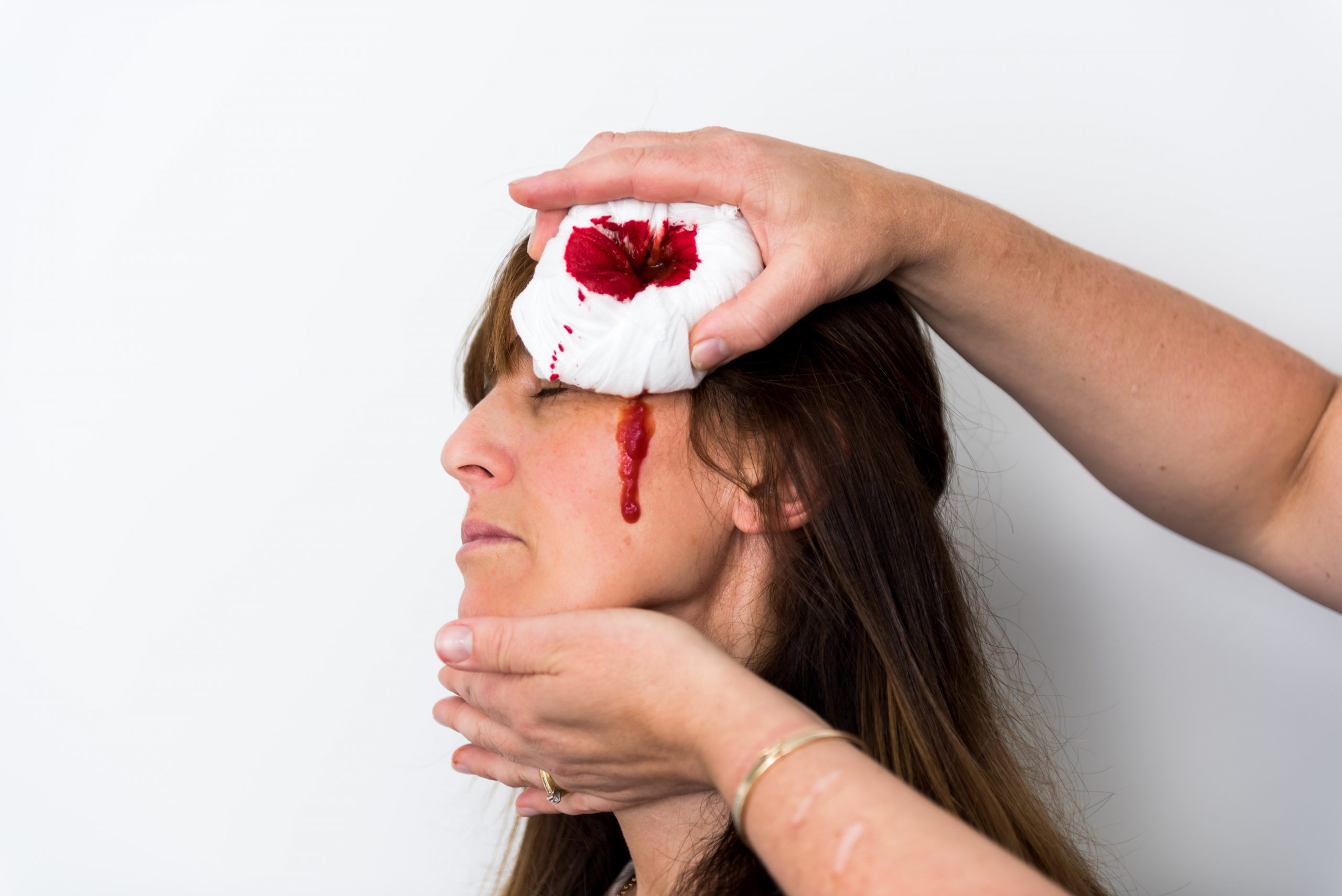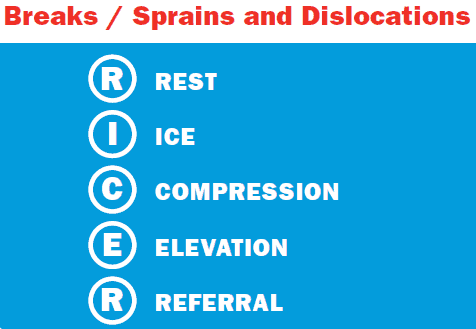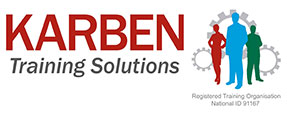FIRST AID ESSENTIALS
FRACTURES
A fracture occurs when the bone is broken due to a high force impact, stress or as a result of a medical condition which weakens the bones.
There are 3 types of fractures
- Closed – bone is broken with skin intact;
- Open – broken bone protrudes through skin or there is a wound leading up to the break; and
- Complicated – both open and closed fractures may be complicated when there is an associated injury to a major nerve, blood vessel, or vital organ(s).
Signs and symptoms
- Broken bone penetrating skin
- Swelling or bruising
- Loss of movement and function
- It looks wrong (deformity)
- Shortening of a limb
- Sound of bone ends “grating” against each other (crepitus)
If you are unsure if the person has a fracture or a strain/sprain, treat as a fracture first.
Management
When confronted with a fracture, the best approach is to immobilise the fracture to prevent further injury, reduce blood loss and provide comfort to the casualty. This can be done using bandaging.
To do this, where there is no major blood loss such as a closed break, we use the R I C E R method:
- Rest
- Immobilise
- Apply an ice compress
- Elevate
- Refer for treatment
For pelvic injuries; lay them on their back – bend the knees; keep the legs together with loose bandage; roll if unconscious for airway
For jaw breaks / facial injury, the casualty is the best person to support their own jaw for comfort.
Remember, call 000 if breathing is compromised – follow DRSABCD
DO NOT push a dislocated bone back into place – this may cause further injury and result in surgery or long term complications
DO NOT force an injury into a position that makes the casualty uncomfortable or create further pain – when immobilising an injury ensure the injury is kept in the position of most comfort; in this example you may use a splint to keep the limb immobilised.

Bandaging a head injury
Pressure bandaging to bleeds on the head can be used provided there are no signs of severe head trauma such as skull fracture. Signs of skull fracture include deformity, visible cracking, blackness around the site, eyes and ears.
Call for an ambulance If there has been a loss of consciousness at any time, no matter how brief.
If a skull fracture is suspected, soak up the bleeding with sterile padding and call 000 with casualty seated on the ground

Quick response guide

ARC Guidelines and Related Links
Test your knowledge
RICER stands for:
